Buying an investment property to rent out is not the only way to invest in real estate. Many REIT stocks exist in Canada, which allows you to get real estate exposure through your investment accounts.
In terms of returns, REIT total return performance over the past 20 years has outperformed the S&P 500 Index.
Since the S&P 500 is a difficult benchmark to outperform, this is excellent news for investors considering investing in REITs. This might not translate exactly to the Canadian market, but it’s a good indicator of the potential of REITs.
We will cover the best Canadian REIT stocks below and why they may be an excellent addition to your portfolio.
TLDR
The best two Canadian REITs are Allied Properties REIT (AP-UN) and the Canadian Tire REIT (CRT-UN). These two have the highest dividend payouts and size of assets.
I made this video as well if you don’t want to read!
Pros and Cons of REITs
Like all other investments, REITs have their pros and cons when it comes to investing:
- The ability to add real estate exposure to your investment accounts at a low cost
- Much higher liquidity than buying and selling a physical property
- Great income potential
- The ability to access sectors that you may not normally be able to invest in (office space)
- Potential for more tax efficiency by deferring taxes (RRSP accounts) or being tax exempt (TFSA) altogether.
- Buying and selling properties can be time-consuming. Trading REITs is extremely easy and takes very little time.
- Daily stock performance changes can cause higher volatility than owning physical property.
- Some REIT sectors may underperform based on market trends or conditions
- Lack of control over performance and management of properties
- Investing in REIT stocks also puts you at the mercy of the REIT manager. They may do a better or worse job of managing the properties in their portfolio.
The increased liquidity of REITs can be a double-edged sword. In a market crisis, REIT stocks can fall aggressively when investors are flocking to cash and liquidating positions. Directly owning physical properties will likely not have the same effect.
Canada’s Monthly Dividend Paying REITs
Here is a full list of all the REITs in Canada:
| Company | Ticker | Market Cap | Dividend Yield (12-Month Trailing) |
|---|---|---|---|
| Automotive Properties | APR-UN.TO | $503.30 Million | 7.7% |
| Allied Properties | AP-UN.TO | $2.17 Billion | 10.14% |
| Artis | AX-UN.TO | $647.72 Million | 9.45% |
| Boardwalk | BEI-UN.TO | $3.79 Billion | 1.56% |
| BTB | BTB-UN.TO | $257.87 Million | 9.93% |
| Canadian Apartment Properties | CAR-UN.TO | $8.18 Billion | 2.92% |
| Choice Properties | CHP-UN.TO | $9.58 Billion | 5.47% |
| Crombie | CRR-UN.TO | $2.40 Billion | 6.45% |
| CT | CRT-UN.TO | $3.30 Billion | 6.11% |
| Chartwell Retirement Residences | CSH-UN.TO | $2.88 Billion | 5.09% |
| Dream Industrial | DIR-UN.TO | $3.76 Billion | 5.17% |
| Dream Office | D-UN.TO | $288.73 Million | 9.86% |
| First Capital | FCR-UN.TO | $3.44 Billion | 5.19% |
| Granite | GRT-UN.TO | $4.75 Billion | 4.2% |
| H&R | HR-UN.TO | $2.68 Billion | 6% |
| InterRent | IIP-UN.TO | $1.93 Billion | 2.63% |
| Killam Apartment REIT | KMP-UN.TO | $2.24 Billion | 3.58% |
| Minto Apartment | MI-UN.TO | $651.15 Million | 2.87% |
| Morguard North American Residential | MRG-UN.TO | $800.41 Million | 4.75% |
| Morguard | MRT-UN.TO | $348.89 Million | 4.42% |
| NorthWest Healthcare Properties | NWH-UN.TO | $1.02 Billion | 17.46% |
| Plaza Retail REIT | PLZ-UN.TO | $397.60 Million | 6.45% |
| RioCan Real Estate Investment Trust | REI-UN.TO | $5.38 Billion | 5.81% |
| Slate Grocery REIT | SGR-UN.TO | $710.77 Million | 6.92% |
| Slate Office REIT | SOT-UN.TO | $74.22 Million | 29.89% |
| SmartCentres | SRU-UN.TO | $4.03 Billion | 7.62% |
| True North | TNT-UN.TO | $141.64 Million | 26.41% |
What to Look For in a Good REIT
There are several elements to look for in a good REIT before deciding to put your money to work.
- A long performance track record with a decently-sized market capitalization: The performance track record can showcase how well the REIT management team has generated returns for investors. A larger market capitalization shows a higher level of investor interest.
- High dividend yield: This is especially true for investors that are looking for an income stream from their real estate investment. While constant cash flows are very useful, keep in mind that dividends are cash that the company is not using to grow its business further.
- Low payout ratio: A lower ratio likely indicates a more stable and sustainable dividend in the future. REITs with a high payout ratio (especially over 100%) will likely have to reduce their dividend in the future. A combination of a low payout ratio and a high dividend is ideal.
- Performance during periods of market stress: Depending on the REIT’s sector, it may be more or less prone to sell-offs. This can be invaluable to investors, especially those that are more risk-averse.
Best Canadian REIT Stocks
- Allied Properties REIT (AP-UN.TO)
- CT REIT (CRT-UN.TO)
- Dream Industrial Real Estate Investment Trust (DIR-UN.TO)
- Choice Properties Real Estate Investment Trust (CHP-UN.TO)
- Granite Real Estate Investment Trust (GRT-UN.TO)
- Killam Apartment REIT (KMP-UN.TO)
- Canadian Apartment Properties Real Estate Investment Trust (CAR-UN.TO)
- Automotive Properties Real Estate Investment Trust (APR-UN.TO)
- Nexus Industrial REIT (NXR-UN.TO)
- SmartCentres Real Estate Investment Trust (SRU-UN.TO)
1. Allied Properties REIT

- Ticker: AP-UN.TO
- Forward Dividend Yield: 9.65%
- Dividend Payout Ratio: 398.95%
- Dividend Yield (12-Month Trailing): 10.14%
- Upcoming Dividend Date: Feb 15, 2024
- Market Cap: $2.17 Billion
Allied Properties is one of the largest REITs in Canada by total assets, with $11.3 billion in Q3 2023. It was also one of the largest by market capitalization, but that was before it lost two-thirds of its value after the pandemic.
Even though this massive discount is why Allied Properties is one of the best REIT picks in Canada, its solid fundamentals and potential make it worth buying at any given time.
It’s important to understand that the massive slump Allied Properties is still struggling to recover does not reflect a weakness in its financials or management. As an “urban workspace” REIT (or office property), it is uniquely vulnerable to the pandemic.
The work-from-home model tanked the demand for office properties, and confidence around REITs like Allied Properties started eroding rapidly.
However, the company showed amazing resilience in the COVID year (2020) and beyond.
The Funds From Operations (FFO) actually increased between the first and last quarter of 2020 and rose by 11.7% in Q3 2023, when the stock was rapidly losing its value. The FFO payout ratio is at 82.6% and is actually a step down from last year, though it never entered into dangerous territory.
Its debt-to-equity ratio is at 0.33, which is quite low. Basically, for every $1 billion of debt, it has a little less than $3 billion worth of property to back it up. As for the portfolio, the bulk of it is in Toronto and Montreal – 77% by area (square feet) and 69% by number of properties.
According to the numbers put forward by the REIT (so they have to be taken with a grain of salt), the occupancy numbers are above market average in all of the regions (except Toronto).
However, the 86.5% occupancy rate in Toronto, 89.5% in Montreal, and 77.5% in Calgary shows that the company can grow its income by a massive margin without investing a dollar in acquiring new properties.
You should understand that the REIT is solid, not just for its financials but its dividend history as well. It’s one of the few aristocratic REITs in Canada (with 11 consecutive years of growth) and, thanks to the discount, is currently offering a juicy yield of around 10%.
The cherry on top is its growth potential, which was actually the reason many people bought it before COVID, and a resurgence of it can be huge.
2. CT REIT
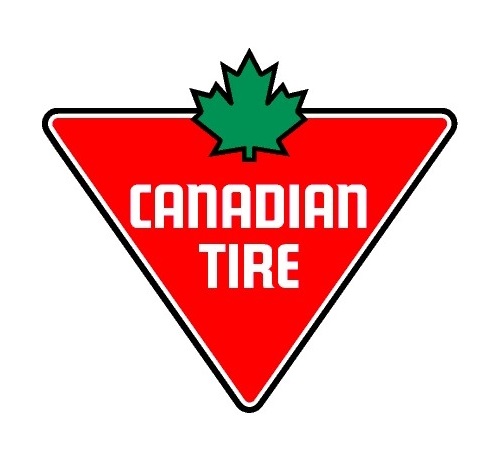
- Ticker: CRT-UN.TO
- Forward Dividend Yield: 6.42%
- Dividend Payout Ratio: 89.31%
- Dividend Yield (12-Month Trailing): 6.11%
- Upcoming Dividend Date: Feb 15, 2024
- Market Cap: $3.30 Billion
CT REIT was spun out from Canadian Tires in 2013. The corporation wanted to leverage its retail name and real estate assets separately and created a symbiotic relationship between Canadian Tires and CT REIT.
Canadian Tires occupies the bulk of its 370 retail properties, which has resulted in favourable terms like a Weighted Average Lease Term of 8.5 years, which is quite massive, especially in the retail sector.
It has also resulted in an occupancy rate of over 99%. The company has diversified its portfolio by adding industrial properties that now represent about 14% of the Gross Leasable Area (GLA), though there is little clarity about its revenue share.
It’s among the largest Canadian REITs based on the fair market value of its assets and its market capitalization and is quite stable.
Stability is not a great feature for growth, but if you are planning on holding it for a decade or so (and the company sticks to its current performance patterns), the chances of capital appreciation are much higher than depreciation.
It checks all the boxes when it comes to dividends, especially now when it’s offering a healthy yield between six and seven percent.
The Adjusted FFO is snugly in the safe zone at 74.8%, and the REIT has grown its payouts for ten consecutive years, earning the title of an aristocrat. Its total indebtedness is roughly 40% of its assets.
You should consider CT REIT for its financial and operational sustainability as well as for its relatively well-rounded (for a REIT) return potential.
3. Dream Industrial REIT

- Ticker: DIR-UN.TO
- Forward Dividend Yield: 5.38%
- Dividend Payout Ratio: 264.87%
- Dividend Yield (12-Month Trailing): 5.17%
- Upcoming Dividend Date: Feb 15, 2024
- Market Cap: $3.76 Billion
Dream Industrial REIT boasts a solid portfolio of 322 properties worth over $7.9 billion and spread out over three key markets – Canada, the US, and Europe. This is good from a diversification standpoint and offers the REIT more growth opportunities compared to more localized players.
The occupancy rate of 97.2% is another strength, but it also means that the company has little room left to increase its cash flow without new acquisitions. The Weighted Average Lease Term (or WALT) is 4.4, so there is little chance of interruption in its revenues and FFOs for at least the next four years.
It usually cuts both ways since the REIT is also bound by the lease term and may not be able to increase rent, but some of the deals the company made with existing tenants ahead of lease renewals show that the management is well-versed in dealing with this issue and keeping rents at market levels.
The industrial nature of the REIT also worked in its favour since it’s one of the few REITs that has seen its value rise in the last five years, albeit modestly. Apart from 2021, the yield has remained between 5% and 6% since 2019.
As per the last quarter’s numbers, the distributions are just about 68% of the diluted FFO. The net debt to net asset ratio is also healthy at 36%, a drop of 50% from 2017.
It’s a great pick even if you are looking for just healthy and secure dividends, but if you are looking for a good mix of capital appreciation potential and dividends, it’s one of the safest options in the REITs. There is no dividend growth, but that’s the norm for many Canadian REITs.
4. Choice Properties REIT

- Ticker: CHP-UN.TO
- Forward Dividend Yield: 5.58%
- Dividend Payout Ratio: 81.38%
- Dividend Yield (12-Month Trailing): 5.47%
- Upcoming Dividend Date: Feb 15, 2024
- Market Cap: $9.58 Billion
With a market value of over $9.5 billion at the time of writing and 64.2 million sq. ft. of GLA worth about $16.5 billion, Choice Properties REIT is the largest REIT in Canada.
It has a relationship similar to Loblaws that Canadian Tires has with CT REIT, but not at the same scale. They are both owned by George Weston, a holding company. But Loblaws represent only 57% of the total tenancy.
Choice’s portfolio is both massive and diverse. There are 704 properties across three key areas – retail, which makes up 80% of the Net Operating Income, followed by industrial properties and residential assets.
Its occupancy rate has remained well over 97% since 2014, and the weighted average lease term is 5.6 years.
The tenant portfolio is impressive even if we look past Loblaws, and there is a high concentration of necessity-based businesses like Metro, Walmart, and Costco. They are resilient against weak markets and recessions, and as their landlord, Choice Properties benefits from this strength.
It is reflected in the financials as well. About $12.4 billion worth of assets (representing 75% of the total asset value) are unencumbered. Adjusted debt to total asset ratio is at 40.6%.
As for dividend sustainability, the adjusted FFO payout ratio is healthy at 75%, though the AFFO payout is quite high at 99%, though it’s coming down. The yield is typically quite healthy, above 5.5%.
The capital appreciation potential is weak but exists, at least considering its performance in the last decade, which can be considered “good” for a REIT. It’s not an aristocrat, but it has started growing its payouts.
As the largest REIT anchored by incredibly safe retail tenants, Choice Properties is a safe bet for you even if you are a conservative investor. The return potential is better than modest.
5. Granite REIT
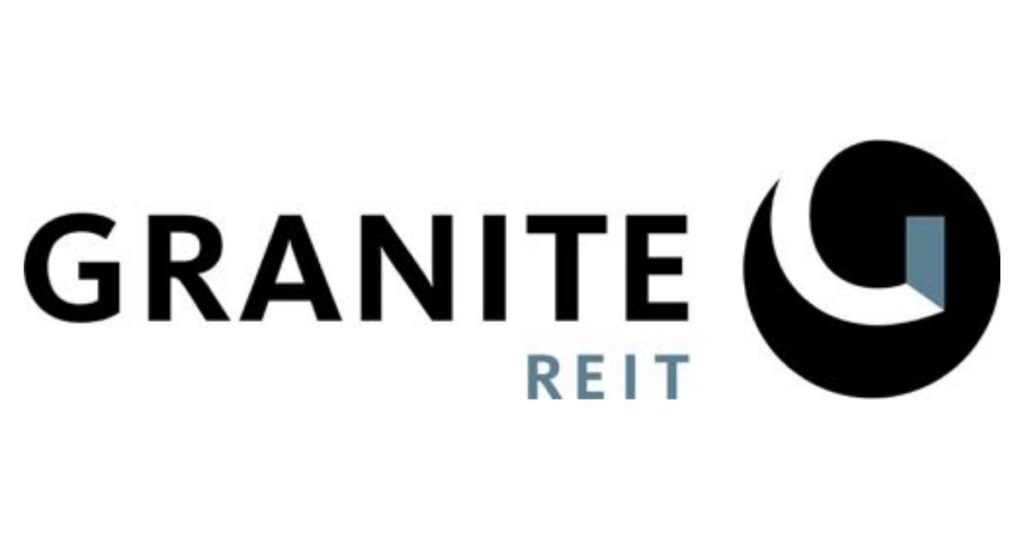
- Ticker: GRT-UN.TO
- Forward Dividend Yield: 4.49%
- Dividend Payout Ratio: 127.11%
- Dividend Yield (12-Month Trailing): 4.2%
- Upcoming Dividend Date: Feb 15, 2024
- Market Cap: $4.75 Billion
Granite is also an industrial REIT but with an edge – It has an international portfolio of light industrial and logistical properties that are highly desirable in today’s e-commerce economy.
When we say it has a diverse portfolio, it doesn’t mean it has some token properties in other countries. Only about 21% of its portfolio (by fair market value) is Canadian. Over 50% is in the US, and about 25% is in Germany, the Netherlands, and Austria.
E-commerce and distribution properties make up about 71% of its portfolio, which allowed the company to ride the e-commerce growth train. The downside was that when e-commerce businesses went into correction mode, Granite followed.
It experienced a significant decline, which pushed its usually low yield to the mid 4% range, making it attractive for dividends when it’s already a desirable REIT for its growth potential.
Collectively (from dividends and growth), the REIT has returned over 200% to its investors in the last decade (2013 to 2023). It also enjoys a relatively high Weighted Average Lease Term of 6.4 years.
The debt is roughly 35% of its assets. The Adjusted FFO has been on the rise and has grown 93% since 2017. The AFFO payout ratio is not just healthy at 72%; it has been declining steadily since 2017.
You might judge Granite as a better buy for its growth potential than dividends (considering the low yield), and the growth part hasn’t been very active lately.
However, if you add its status as an aristocrat to the equation (with 12 years of consecutive growth) and roughly 5% annualized dividend growth over the last ten years, it becomes a much more compelling prospect.
6. Killam Apartment REIT
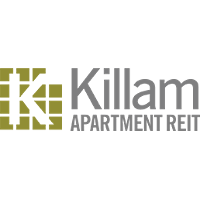
- Ticker: KMP-UN.TO
- Forward Dividend Yield: 4.00%
- Dividend Payout Ratio: 32.26%
- Dividend Yield (12-Month Trailing): 3.58%
- Upcoming Dividend Date: Feb 15, 2024
- Market Cap: $2.24 Billion
Killam Apartment REIT has a market capitalization of around $2 billion and a portfolio of about 19,133 apartment units, 5,975 Manufactured Home Communities (MHC) sites, and 0.95 million square feet of commercial area – worth about $5 billion.
Apartments make up about 88% of the REIT’s Net Operating Income (NOI), and about 51% of the total NOI comes from Nova Scotia and New Brunswick.
This geographic distribution is an edge. It’s the largest apartment owner in New Brunswick and Halifax, which allows it significant control over the market dynamics and rental trends. Since Nova Scotia is also experiencing a rise in immigrant population, Killam is set to benefit more from this edge.
The debt-to-asset ratio is not as healthy as it is for other REITs (42.8%), but it’s far from unsafe.
The apartment occupancy rate is quite high at 97.1%, especially considering its portfolio size. Stock’s performance has been shaky in the last five years, but overall, investors neither gained nor lost their capital (at least until you calculate the impact of inflation).
The yield is good at above 4% but quite modest for a REIT. However, it’s backed by a healthy AFFO payout ratio of 72%.
However, if you consider the growth of the REIT stock before the pandemic and the possibility of this growth resurging, it nicely offsets the modest yield. Its status as a dividend aristocrat that has been growing its payouts for six consecutive years also endorses its position.
7. Canadian Apartment Properties REIT

- Ticker: CAR-UN.TO
- Forward Dividend Yield: 3.03%
- Dividend Payout Ratio: 166.01%
- Dividend Yield (12-Month Trailing): 2.92%
- Upcoming Dividend Date: Feb 15, 2024
- Market Cap: $8.18 Billion
Canadian Apartment Properties REIT is Canada’s largest landlord, with a massive portfolio of about 64,500 residential apartments, townhouses, and MHCs.
It dominates the Ontario market, and apart from a good presence in some other provinces, about 15.6% of its portfolio is in the Netherlands, which is quite adequate geographical diversification.
The REIT is growing its portfolio in terms of new builds/new constructions, and compared to 2017 when it represented just 1% of the portfolio, it now represents about 11%.
So, about a tenth of the company’s portfolio is made up of highly desirable assets with a long life and minimal maintenance requirements (though it will grow as they age). The REIT also has a solid occupancy ratio of about 98.4%.
Even though it’s an aristocrat that has grown its payouts for 11 consecutive years, the dividends have never been its major strength because of the relatively low yield.
Investors coveted this REIT because of its growth potential, which has been suffering for the last few years. But it has some of the safest and most financially stable dividends on this list, thanks to an FFO payout ratio of 56.8%.
It’s not the most rewarding REIT out there, even among the giants of the industry, because of its low yield and recent lacklustre performance, but it’s important to understand that the best time to buy it is when it’s slumping, and the yield is soaring, i.e., when it looks weak from a growth standpoint.
8. Automotive Properties REIT

- Ticker: APR-UN.TO
- Forward Dividend Yield: 7.60%
- Dividend Payout Ratio: 40.04%
- Dividend Yield (12-Month Trailing): 7.7%
- Upcoming Dividend Date: Feb 15, 2024
- Market Cap: $503.30 Million
Automotive Properties REIT is the first “niche” REIT on this list and focuses on just one class of retail properties – vehicle dealerships.
It has 77 properties in major metropolitan areas in Canada, and about 46% of its Gross Leasable Area (GLA) is in two markets alone – the Greater Toronto Area and the Greater Montreal Area.
One of the REIT’s major strengths, apart from its strategically located properties, is its tenant portfolio. It has many of Canada’s largest dealership giants in its portfolio, including Dilawri and AutoCanada, but it’s also working with EV giants like Tesla.
The EV boom will be the next big thing for the automotive industry across the world, and this REIT is well-positioned to benefit from it.
Performance-wise, the REIT has been quite stable in the past eight or so years. We can also call it stagnant, but either way, it’s good from a capital preservation perspective.
However, it’s quite undervalued right now, and given the right market circumstances, it may experience decent growth.
Until then, the most attractive feature of this REIT was the juicy yield, which was usually above 6.5% and is currently higher than 7.5%. The dividends are backed by a sustainable Adjusted FFO payout ratio of 87.4%. The debt is about 44.5% of the company’s Gross Book Value (GBV).
You should understand that while Automotive Properties REIT is a good pick for dividends at almost any given time, it’s a great pick right now when the yield is high, thanks to the slump, and the stock is poised for growth due to its valuation and positive market dynamics.
9. Nexus REIT
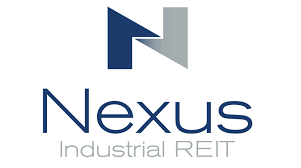
- Ticker: NXR-UN.TO
- Forward Dividend Yield: 8.49%
- Dividend Payout Ratio: 36.54%
- Dividend Yield (12-Month Trailing): 7.84%
- Upcoming Dividend Date: Feb 15, 2024
- Market Cap: $735.30 Million
Nexus is another industrial REIT with a market capitalization of $703 million. The REIT mostly focuses on industrial properties (as its name suggests), and it represents about 89.4% of its ROI.
It also has 16 retail and 13 office properties, which, along with a few others and 84 industrial properties, bring the total count of its portfolio assets to 117. The bulk of its NOI comes from Ontario and Alberta.
The REIT has a Weighted Average Lease Term of about 6.8 years, and its industrial portfolio has an amazing occupancy rate of about 99%.
The stock did experience growth initially, but since COVID, it has mostly been in decline and has lost about half of its value. This has pushed the yield up to an attractive level – mid 8%, which is backed by an 83% FFO payout ratio.
Nexus is a good pick if you want to buy a pure-play Canadian industrial REIT, and it’s offering a much higher yield than its other industrial counterparts right now. This is an edge, especially if there is a good probability of the stock growing when the market is healthy.
10. SmartCentres REIT
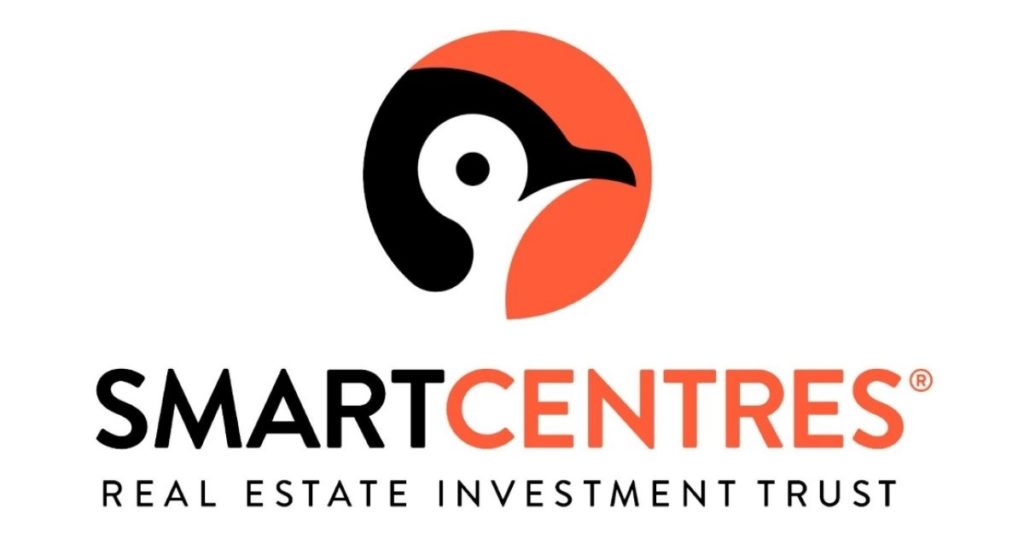
- Ticker: SRU-UN.TO
- Forward Dividend Yield: 7.77%
- Dividend Payout Ratio: 64.99%
- Dividend Yield (12-Month Trailing): 7.62%
- Upcoming Dividend Date: Feb 15, 2024
- Market Cap: $4.03 Billion
Closing the list is SmartCenters REIT, a retail giant with a portfolio of 191 properties, 20 of which are under development.
Out of its 155 properties, 114 are anchored by Walmart, and this single tenant is responsible for about 25% of the REIT’s revenue. It also boasts a solid 98% occupancy rate. The rest of the tenant portfolio is just as impressive.
Despite so many under-development projects and the fact that the REIT is focusing on developing a solid mixed-use property portfolio as well, it has about $8.7B in unencumbered properties. The debt-to-aggregate asset ratio is stable at 43% as well.
The primary offering of SmartCentres is financially sustainable dividends at an attractive yield (8% at the time of writing this). The AFFO payout ratio is over 96%, which is a cause for some concern.
However, the REIT suspended the growth of its payouts a while back, and it may help with the financial sustainability of the dividends.
If you are only buying for dividends, SmartCentres is a good REIT to consider, but don’t expect decent capital appreciation in this investment.
How REITs Work
REITs (or real estate investment trusts) are fairly straightforward to understand. They are companies that pool money from investors and buy real estate properties to manage. Rental income and capital gains are then paid back to investors.
REITs typically focus on different real estate areas. Some common categories include:
- Retail REITs
- Residential REITs
- Healthcare REITs
- Office REITs
- Mortgage REITs
- Hotel and Motel REITs
Some REITs may perform relatively better or worse, depending on market trends or conditions. Throughout the COVID-19 sell-off of 2020, office and retail REITs underperformed as people were stuck at home.
REITs can be publicly traded (such as REIT stocks) or privately traded. A REIT has some flexibility in choosing between whether to reinvest its earnings back into the business (to grow) or to pay it out to investors in the form of a dividend.
The sustainability of a REIT’s dividend can be judged based on how high its payout ratio is. This will be discussed in further detail below.
How to Buy the Best Canadian REIT Stocks
The cheapest way to buy stocks is from discount brokers. My top choices in Canada are:
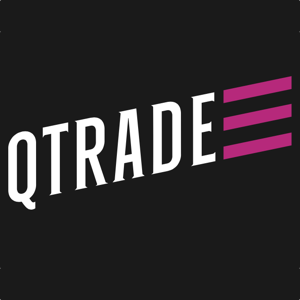
- 105 commission-free ETFs to buy and sell
- Excellent customer service
- Top-notch market research tools
- Easy-to-use and stable platform

- Stock and ETF buys and sells have $0 trading fees
- Desktop and mobile trading
- Reputable fintech company
- Fractional shares available
To learn more, check out my full breakdown of the best trading platforms in Canada here.
Conclusion
REIT stocks are an important element to be considered when building a well-constructed portfolio. Including real estate in your investment portfolio increases diversification and will likely increase your portfolio’s yield.
There are many excellent REIT stocks available in Canada across different REIT sectors.
If you are looking to add real estate exposure to your portfolio but don’t want to invest through a REIT, real estate stocks also exist as an option.
Within Canada, there are several real estate stocks that may be excellent complements or substitutes to REITs.





If you are going to make a list and be credible you should at least make a list with REITs that are still operational.
Hi ! Im so new to all of this ! Can I have your opinion about which one will you choose as a beginner ? And will you choose more than one ?
Thanks so much !
Hi Myriam, if you’re a total beginner, first do the vanguard investor questionnaire to figure out what your risk tolerance is: https://www.vanguardcanada.ca/individual/questionnaire.htm#/ also, I would recommend doing a REIT ETF if you’re a total beginner, this will give you exposure to many different REITs, and not to invest too much of your wealth into this as it is more of an alternative asset class: https://wealthawesome.com/best-reit-etfs-in-canada/
Hi Chris, if I purchase a REIT now at 4% dividend yield and the rate increases a few years later, will I earn the new, higher, rate or will I be locked in at the rate I bought it at?
Hey Tyler, another great question, you will receive the higher dividend. Dividends are paid out per share, not as a percentage. So for example, Suncor has a $0.21 dividend per share. If you hold 100 shares of Suncor, you’ll get $21 in dividends. So if in the future they increase it to $0.30 dividends per share, you’ll get $30.
Thanks so much! I love this site! There’s tons of great information and you answer questions really fast!
Happy to help Tyler 🙂 Check out the Youtube channel also if you like video content.
Hi Chris, I was wondering why people wouldn’t always invest in the REITs with the highest dividend yield percentages. For example, the 11% dividend yield is far better than the 4% yield, so why would people choose to invest their money there instead of the higher rate.
Great question Tyler, so the dividend yield is just one piece of the puzzle. You have to look at the payout ratio (how much of their earnings is a company paying out to it’s shareholders?) if it’s too high it’s not a good sign that it will be sustainable. Also, you have to look at past and future growth of the stock. A company might have a high dividend, but the stock might have decreased in value, or hardly grown, or have poor growth prospects for the future.
Hi Chris…
It was a good read … I was trying to search the mentioned stcks with their ticker name in wealthsimple trade and couldn’t find them like the first one Northview apartment and the fourth one too slate office …..Am I missing something
Hey Salina, I was able to find Slate on wealthsimple under SOT.UN, and as for Northview it was actually sold in November 2020, so it’s no longer available for trading.